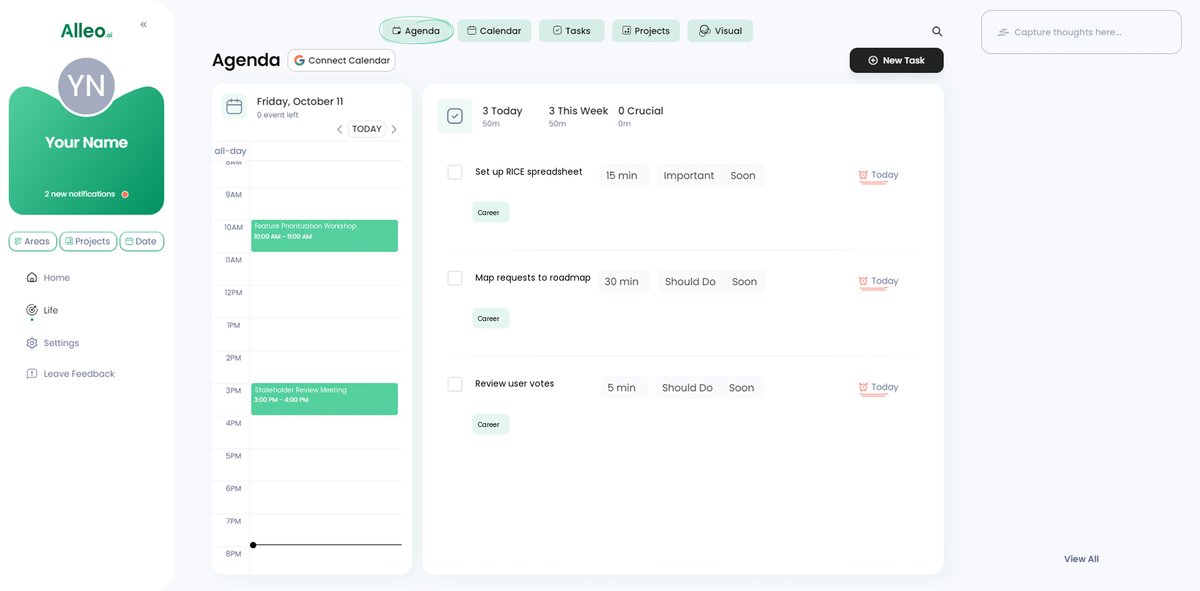How Product Managers Effectively Prioritize Feature Requests: The Ultimate Guide
Imagine receiving a flood of feature requests from users, stakeholders, and your own team, all demanding attention. How do you prioritize product feature requests effectively?
As a product manager, you’ve probably faced this challenge more times than you’d like to count. In my experience helping clients navigate these complexities, I often encounter the struggle of balancing user demands with strategic goals in product backlog management.
In this article, you’ll learn how to use data-driven frameworks for prioritizing product feature requests, align requests with strategic goals through product roadmap planning, and balance stakeholder input with user needs using customer value assessment techniques.
Let’s dive into feature prioritization techniques.

The Struggle of Prioritizing Feature Requests
Balancing user demands, stakeholder expectations, and strategic goals is no easy feat when prioritizing product feature requests. Many clients initially struggle with the sheer volume of feature requests that flood their inboxes, making product backlog management challenging.
It’s overwhelming and can lead to analysis paralysis in agile product management.
One product manager I worked with was unsure whether to prioritize based on the number of requests or strategic alignment for their product roadmap planning. This indecision often results in a misaligned product development process.
The real-world implications? Dissatisfied users and wasted resources due to ineffective feature prioritization techniques.
In my experience, people often find it painful to sift through requests and determine what truly adds value through customer value assessment. This challenge can significantly delay product enhancements and disrupt the overall roadmap.
Prioritizing product feature requests isn’t just a task; it’s a critical skill that impacts the product’s success and user satisfaction, often requiring data-driven feature selection and stakeholder alignment in product development.

Core Strategies for Effective Feature Request Prioritization
Overcoming this challenge of prioritizing product feature requests requires a few key steps. Here are the main areas to focus on to make progress in product backlog management:
- Use Data-Driven Prioritization Frameworks (RICE): Evaluate feature requests using Reach, Impact, Confidence, and Effort metrics for effective data-driven feature selection.
- Align Requests with Strategic Goals and Roadmap: Ensure that feature requests align with overarching business objectives and fit into your product roadmap planning.
- Implement User Voting for Feature Requests: Let users vote on features to highlight high-demand requests, aiding in user feedback analysis and customer value assessment.
- Balance Stakeholder Input with User Needs: Engage stakeholders in discussions to capture their insights and manage expectations, ensuring stakeholder alignment in product development.
Let’s dive into these feature prioritization techniques!
1: Use data-driven prioritization frameworks (RICE)
Using data-driven prioritization frameworks like RICE ensures you make informed decisions when prioritizing product feature requests based on clear metrics.
Actionable Steps:
- Conduct a workshop to train your product teams on the RICE framework and its application for feature prioritization techniques.
- Implement a scoring tool or spreadsheet to calculate RICE scores for all feature requests, aiding in product backlog management.
- Schedule bi-weekly review meetings to reassess scores and adjust prioritization based on new insights from user feedback analysis.
Explanation: These steps ensure that your prioritization process for product feature requests is systematic and transparent. By using a framework like RICE, you can objectively assess the value of each feature request in agile product management.
This approach helps align development efforts with strategic goals and user needs in product roadmap planning. For further insights on effective prioritization techniques, check out this guide on feature prioritization.
Key benefits of using RICE for prioritizing product feature requests:
- Provides a structured approach to evaluating features
- Minimizes subjective decision-making in customer value assessment
- Facilitates easier comparison between different requests for data-driven feature selection
By following these steps, you can streamline your prioritization process and make decisions that drive product success, ensuring stakeholder alignment in product development.

2: Align requests with strategic goals and roadmap
Aligning feature requests with strategic goals is crucial for prioritizing product feature requests and ensuring that your product development efforts contribute to your overall business objectives.
Actionable Steps:
- Map feature requests to strategic objectives and the product roadmap.
- Create a visual alignment matrix to ensure all prioritized features contribute to the overall strategy and product roadmap planning.
- Evaluate the potential impact of each request on business goals.
- Conduct impact assessment sessions with cross-functional teams to discuss and score requests, incorporating customer value assessment and data-driven feature selection.
- Communicate alignment and decisions to stakeholders transparently.
- Develop a communication plan to share prioritization rationale and updates with stakeholders regularly, ensuring stakeholder alignment in product development.
Explanation: These steps ensure that your feature prioritization aligns with your business goals, making your product strategy more effective.
By mapping and evaluating requests, you can focus on features that drive the most value, utilizing feature prioritization techniques such as the RICE prioritization framework or MoSCoW method for prioritization.
Regular communication with stakeholders builds trust and keeps everyone aligned. For additional insights, check out this guide on managing feature requests.
Keeping everyone informed and aligned with the strategic roadmap ensures smooth progress and stakeholder satisfaction, which is essential for effective product backlog management and agile product management.

3: Implement user voting for feature requests
Implementing user voting for feature requests is a crucial step in prioritizing product feature requests, ensuring that the most valuable features are highlighted based on user demand.
Actionable Steps:
- Set up a user voting system to gather feedback on feature requests.
- Use a dedicated tool or platform to allow users to vote on their preferred features, aiding in product backlog management.
- Analyze voting results to identify high-demand features.
- Review voting data monthly to identify trends and incorporate user feedback analysis into the prioritization process.
- Balance user votes with strategic priorities.
- Create a weighted scoring system that combines user votes with strategic alignment scores, similar to the RICE prioritization framework.
Explanation: These steps matter because they help you identify and prioritize the features that users value most. This approach ensures that you focus on what matters to your users while aligning with strategic goals in agile product management.
For more insights, check out this guide on managing feature requests.
Benefits of user voting:
- Increases user engagement and loyalty
- Provides direct insight into user preferences for data-driven feature selection
- Helps validate product decisions with real user data, enhancing customer value assessment
Combining user voting with strategic alignment creates a balanced and user-centric prioritization process, essential for effective product roadmap planning.

4: Balance stakeholder input with user needs
Balancing stakeholder input with user needs is essential when prioritizing product feature requests to ensure your product meets the expectations of both groups.
Actionable Steps:
- Host quarterly workshops with stakeholders to review feature priorities and discuss product roadmap planning.
- Implement a balanced scorecard that considers both stakeholder insights and user feedback analysis.
- Develop educational materials and conduct training sessions to align stakeholder understanding of the prioritization process and feature prioritization techniques.
Strategies for effective stakeholder management in product backlog management:
- Regular communication to keep stakeholders informed about agile product management
- Clear explanation of prioritization decisions using methods like the RICE prioritization framework
- Involve stakeholders in key decision-making processes for data-driven feature selection
Explanation: These steps help you capture diverse perspectives while maintaining focus on user-centric features and customer value assessment.
This approach ensures stakeholder expectations align with user needs and strategic goals when prioritizing product feature requests.
For further reading on managing stakeholder input, check out this strategic framework for evaluating customer requests.
Balancing these inputs ensures a cohesive product development strategy that satisfies all involved parties, incorporating techniques like the MoSCoW method for prioritization.

Partner with Alleo to Master Feature Prioritization
We’ve explored how to effectively prioritize feature requests and align them with strategic goals. But did you know you can work directly with Alleo to streamline this process of prioritizing product feature requests and enhance your product management skills?
Setting up an account with Alleo is quick and easy. Start by creating a personalized plan tailored to your specific challenges in feature prioritization techniques and product backlog management.
Alleo’s AI coach will guide you through the process, providing actionable insights and practical advice on user feedback analysis and agile product management.
Our coach tracks your progress, adapts to changes, and keeps you accountable with timely text and push notifications. This ensures you stay on track and make informed decisions for your product roadmap planning and customer value assessment.
Ready to get started for free? Let me show you how!
Step 1: Log In or Create Your Account
To start mastering feature prioritization with Alleo’s AI coach, log in to your account or create a new one to begin your personalized journey toward effective product management.

Step 2: Choose Your Focus Area
Select “Setting and achieving personal or professional goals” to align your product management efforts with strategic objectives and improve your feature prioritization skills, directly addressing the challenges outlined in the article.

Step 3: Select “Career” as Your Focus Area
Choose “Career” as your focus area to align your feature prioritization skills with your professional growth, helping you make strategic decisions that advance your product management expertise and drive business success.

Step 4: Starting a coaching session
Begin your journey with an intake session to establish your personalized plan for mastering feature prioritization, setting the stage for future coaching interactions tailored to your specific product management challenges.

Step 5: Viewing and managing goals after the session
After your coaching session, check the app’s home page to review and manage the feature prioritization goals you discussed, ensuring you stay on track with your product management strategy.

Step 6: Adding events to your calendar or app
Track your progress in solving your feature prioritization challenges by adding key milestones and deadlines to the calendar and task features within the Alleo app, allowing you to visualize your journey and stay accountable to your goals.

Mastering Feature Prioritization: Your Path to Success
Let’s wrap this up by emphasizing the importance of effective feature prioritization and prioritizing product feature requests.
Prioritizing product feature requests is a challenging but crucial task for any product manager. By using data-driven frameworks like the RICE prioritization framework, aligning with strategic goals, implementing user voting for customer value assessment, and balancing stakeholder input, you can make more informed decisions for product backlog management.
Remember, it’s all about finding a balance that satisfies both users and stakeholders while driving your product forward through effective product roadmap planning.
Don’t let the flood of requests overwhelm you. You have the tools and strategies, such as the MoSCoW method for prioritization and user feedback analysis, to tackle this effectively.
And remember, Alleo is here to help with your agile product management needs. Sign up for free and take control of your feature prioritization process today.
You got this!